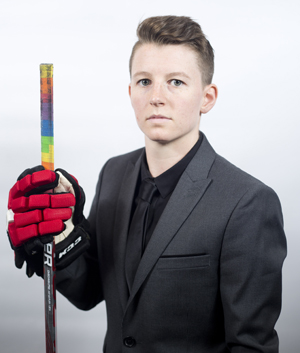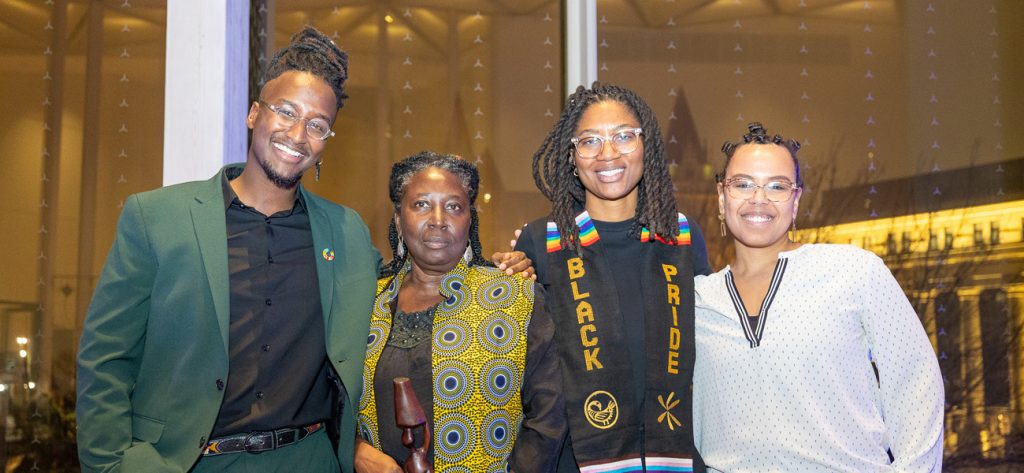Browne came out publicly as a transgender man before his second season in the NWHL…
When Harrison Browne retired from playing women’s pro hockey in 2016, he was only 23 years old. That’s incredibly young for any professional athlete to retire, especially one that is right in the middle of his prime years. For Harrison, the decision had nothing to do with the sport itself, or his ability to continue to excel at it. It was just that it was time for his love of hockey to take a backseat to something much more important: his transition.
“I didn’t retire because I was done with the sport, my body still had a lot more to give. But I was more interested in physically transitioning at that time in my life so I thought that I had to say goodbye to the sport and leave that behind,” said Browne. Physically transitioning from female to male involves taking hormones, including testosterone, something that is banned in pro hockey—and pro sports in general.
Browne came out publicly as a transgender man before his second season in the NWHL. His friends, family, teammates, and coaches already knew, but there was still a disconnect between who he was and the person being portrayed in the media. “I played in college but there was more media attention at the professional level and I just saw the wrong name and the wrong pronouns used a lot more than I was used to,” said Browne.
He decided to come out publicly to the league administration and the fans so he wouldn’t have to pretend anymore, and reception was everything he hoped it would be. “The fans welcomed me with open arms, the front office were extremely open and welcoming, and wanted to make sure they did everything they could to make me feel comfortable. They did a really great job with that and I can’t say enough about how great the fans are in the NWHL.”
Of course being the first openly transgender person to ever play pro hockey comes with its challenges. “I think the biggest challenge I face is playing in a league that doesn’t align with my gender identity. I identify as a man but I’m still in a female body. So the playing level that I fit into in the sport is in the female category, and that disconnect is tough,” Browne explained.
Although the NWHL is working on changing their policies to be inclusive of transgender players, the process takes time, and the reality is that professional hockey will probably always be separated into men’s and women’s leagues. For transgender athletes, that’s just something they have to adapt to. For Brown, “coming out and being called the right name and being able to use the right pronoun has helped alleviate that stress a little bit but it’s still always there at the back of my mind that I play in a women’s league but I identify as a man. It’s just kind of the situation that I’m in and I have to make the best of it. But it is an ongoing struggle.”

Browne’s decision to retire at 23 was motivated by his ultimate goal of undergoing gender confirmation surgery, but when he considered the bigger issue of transgender acceptance and inclusion, he started to have second thoughts. “This past year has been intense in terms of LGBTQ struggles with what is going on with the government in America. I’ve had a front row seat to it and hearing all of that—like the trans military ban—that really did motivate me to want to do my part. I thought that I could create more awareness, that I could bring more of a spotlight to something if I was an active athlete, and that really did inspire me to want to come back and play as a transgender athlete. Being myself, playing professionally, being a role model for any young kid or anybody that needs some hope. That really motivated me to want to come back out of retirement.”
Browne recognized the importance of visible transgender representation and realized his success as a transgender athlete and unique journey is about more than just him. He joins other out LGBTQ athletes like Olympians Adam Rippon, Eric Radford, and Gus Kenworthy as they redefine what it means to be a man in sports. “I think that toxic masculinity has its way of seeping into sports and everyone has this ideal view of what a man should be in sports and I think that constrict is being broken down and it’s really cool to see,” said Browne.
As one of the NHL’s Hockey is for Everybody ambassador’s for February, Browne has witnessed first hand how sports are making steps in the right direction—towards inclusion, acceptance, and equality. In the long run, Browne hopes to continue working in sports and advocate for diversity.
His advice for other young LGBTQ athletes? “Just be yourself. Live for yourself. Don’t worry what other people are thinking. The only regret that I have is that I wish I was my authentic self sooner. And the thing that stopped me is worrying about what other people would think of me. But it doesn’t matter, just live for yourself. Do what you need to do to be happy and the people that need to be in your life with gravitate towards you.”






POST A COMMENT